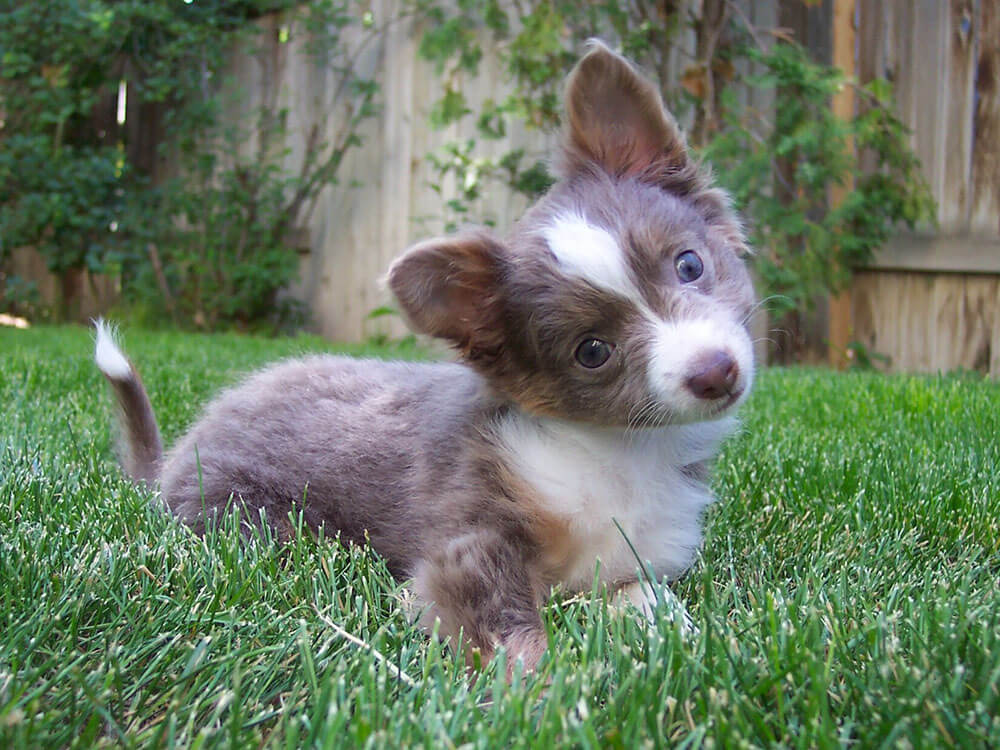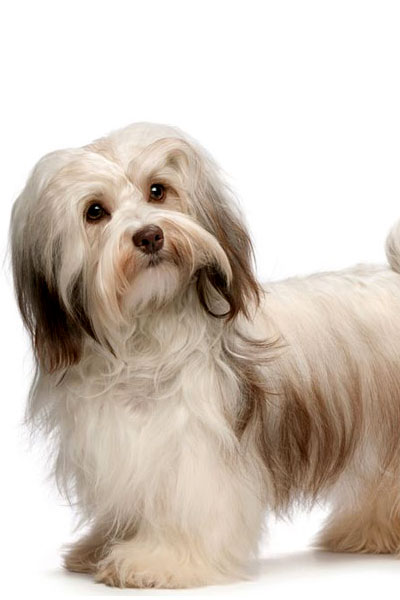Not the breed you're looking for?
Click Here
Featured Story

The Teacup Chihuahua, while distinct in its petite size, is not a separate breed from the standard Chihuahua that has been beloved by dog enthusiasts … [Read More...]
The Havanese is the national dog of Cuba, which is related to bichon-type dogs from Spain. He is also known as the Habanero. The Havanese is officially registered in the Kennel Club and listed under the Toy Breed Group.
The Havanese is a gentle, friendly, and affectionate pooch. His temperament and small size make him a great companion for first-time owners and families with kids of all ages. The Havanese is also known as a velcro dog. Leaving him alone to fend for himself will lead him to become swiftly bored and lonely. Thus, he should have a companion to stay with him at home every day.
The Havanese is highly intelligent and quick to learn. His exercise needs are quite low so 30 minutes of walking or playing will suffice. The Havanese’s long hair, which has self-insulating characteristics, is particularly challenging to maintain.
The Havanese is a breed that descended from bichon-type dogs in Spain that were brought to Cuba in 1492. These dogs are descendants of the poodle, Portuguese water dog, and water spaniel breeds. The Havanese, called Habanero in its native Cuba, deviated from the general characteristics of its ancestors and developed unique traits when it only interbred with local dogs due to trade restrictions that Spain imposed on Cuba. One of which is its abundant and silky coat that insulates efficiently, making the breed extremely heat-tolerant. Initially, its main job was to herd flocks of poultry.
The Havanese became a favourite amongst aristocratic families during the early nineteenth century. European travellers took the breed back to Spain and then to England and France and gained more high-born following, including Queen Victoria and Charles Dickens. However, like most breed trends, its popularity faded mainly because of various wars. It almost became extinct even in its native country. The modern Havanese dogs came from the eleven remaining dogs brought to America in 1959 during the Cuban Revolution. Cuba’s national dog, the Havanese, is registered with the Kennel Club under the Toy Group.
Weighing 7–13 pounds and standing 23–28 centimetres at the withers, the Havanese is a small and sturdy dog. It has a slightly rounded head with a moderate stop and rather short muzzle. It has big almond-shaped eyes that are either black or brown, depending on its coat, with a gentle expression. It has pointed ears that drop down slightly above its eyes. Its nose and lips are black, with some brown dogs having pigmentation. It also has strong jaws with a perfect scissor bite.
This Habanero boasts of a beautiful, long, silky, and hypoallergenic coat, which is wavy or slightly curled. According to KC standards, any colour or combination is permissible except for merle. Aside from aesthetic purposes, its coat is meant to be long to keep the breed cool during hot weather, thanks to its self-insulating characteristic. To be able to keep it in top shape, a lot of time and effort are needed, such as daily brushing, to prevent matting. It will definitely benefit from regular trips to the groomer’s.
Aside from maintaining a healthy and clean coat, you also need to pay attention to other grooming aspects such as its dental health, nails, and ears. Since the Havanese is prone to watery eyes, clean tearstains to avoid infections. If you notice that your dog has excessive tearing, take it to a trusted veterinarian straight away.
The Havanese is a friendly, lively, and affectionate pooch. It thrives on human companionship and would love nothing more than to be with its owners. In fact, it has been dubbed as the Velcro dog because of this particular characteristic. Therefore, it is a clingy dog that tends to suffer from separation anxiety. This dog can live in any environment as long as it stays indoors with the family. It has a tendency to bark even at passers-by, which should be corrected early so it does not turn into a bad habit.
The Havanese is not only famed for its gorgeous appearance, but also for its gentle and loving nature to everyone, including kids of all ages. As owners, parents must teach their children how to treat dogs to avoid accidental physical harm. This breed generally gets along with other animals, including cats, especially when raised together. It is a great choice for first-time owners.
Gentle and affectionate especially to family members, the Havanese is not only a lapdog. It is actually an intelligent dog that excels in dog sports. Since it is highly trainable, energetic, and eager to please, the Havanese can take on dog jobs like assisting the handicapped. Ironically, house-training may seem like the most basic lesson, but this can be challenging for the breed. Patience and consistency are important, and accidents should never be tolerated just because they are easy to clean up.
A typical serving for an adult Havanese is 1/2–1 cup of excellent-quality dry dog food per day. Since each dog has unique needs, the amount of food and frequency of feeding depend on its age, size, build, exercise needs, and metabolism. Learn the basic nutritional needs of your Havanese as a breed as well as its individual characteristics.
Typical calorie needs of an adult Havanese dog per day:
Make sure to feed this toy dog excellent-quality dog food formulated for small dogs as it has different nutrient needs than larger breeds. Dry kibbles containing animal protein (beef, lamb, chicken, and turkey) promote chewing and would help prevent dental problems in small breeds.
Tiny breeds are known to be healthier than large ones, and the Havanese is one tough cookie, health-wise. In fact, its average life expectancy is fourteen to sixteen years and its chances of developing hereditary health issues are slim. That being said, make sure to never take its health for granted and pay particular attention to its diet.
Like any breed, the Havanese needs sufficient exercise to be happy and healthy. For this tiny and lively breed, at least thirty minutes of physically and mentally stimulating activities will do, making it an ideal breed for people with sedentary lifestyles.
A well-bred Havanese pedigree puppy normally costs between £1,000 and £1,200. To ensure it stays healthy, you would have to feed it high-quality food that can set you back £30-£40 a month. You also need to factor in the initial cost for dog accessories and equipment such as food bowls, leads, collars, and beds, which will likely be about £200 depending on the brand.
As to healthcare you need to be prepared in case your dog suddenly falls ill or gets into an accident. You can offset some medical bills if you get a pet insurance, which can range from £20 for a time-limited cover up to £45 for a lifetime one. These prices vary depending on your dog’s health and age, the type of cover you choose, and whether it has pre-existing conditions.
Other outgoings to consider are veterinary expenses that may not be included in a pet insurance coverage such as vaccinations, routine checks, neutering or spaying, and annual boosters, which can have a combined cost of £1000 annually. Roughly, you will be setting aside £60-£90 a month for recurring expenses, depending on the type of insurance cover you choose. This estimate is also exclusive of walking or grooming services that you might later want to pay for.

Are you sure the Havanese is the best breed for you? Take the Pet Breed Selector Quiz to find your perfect breed match.
Dog Breed Selector QuizIf you are unsure with the Havanese and would like to check out other similar dog breeds, you can try taking our Pet Finder.